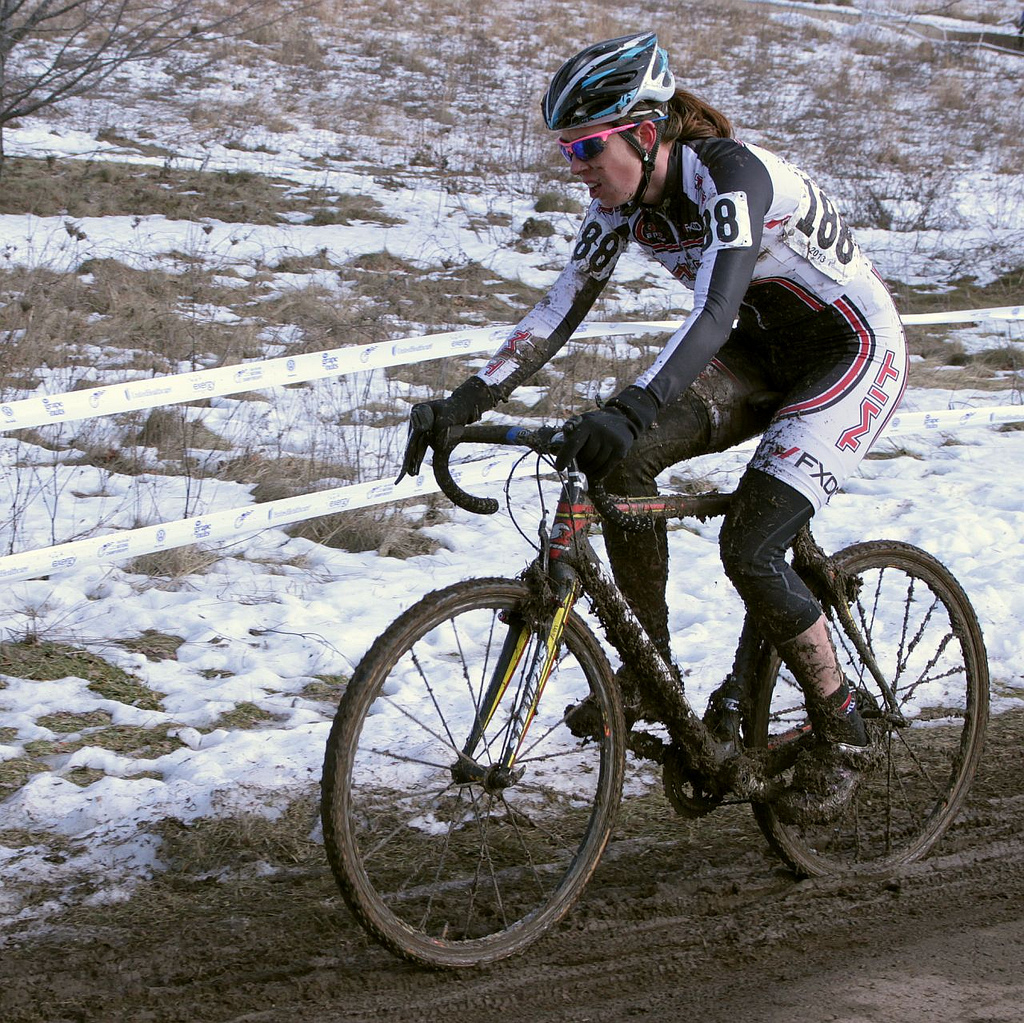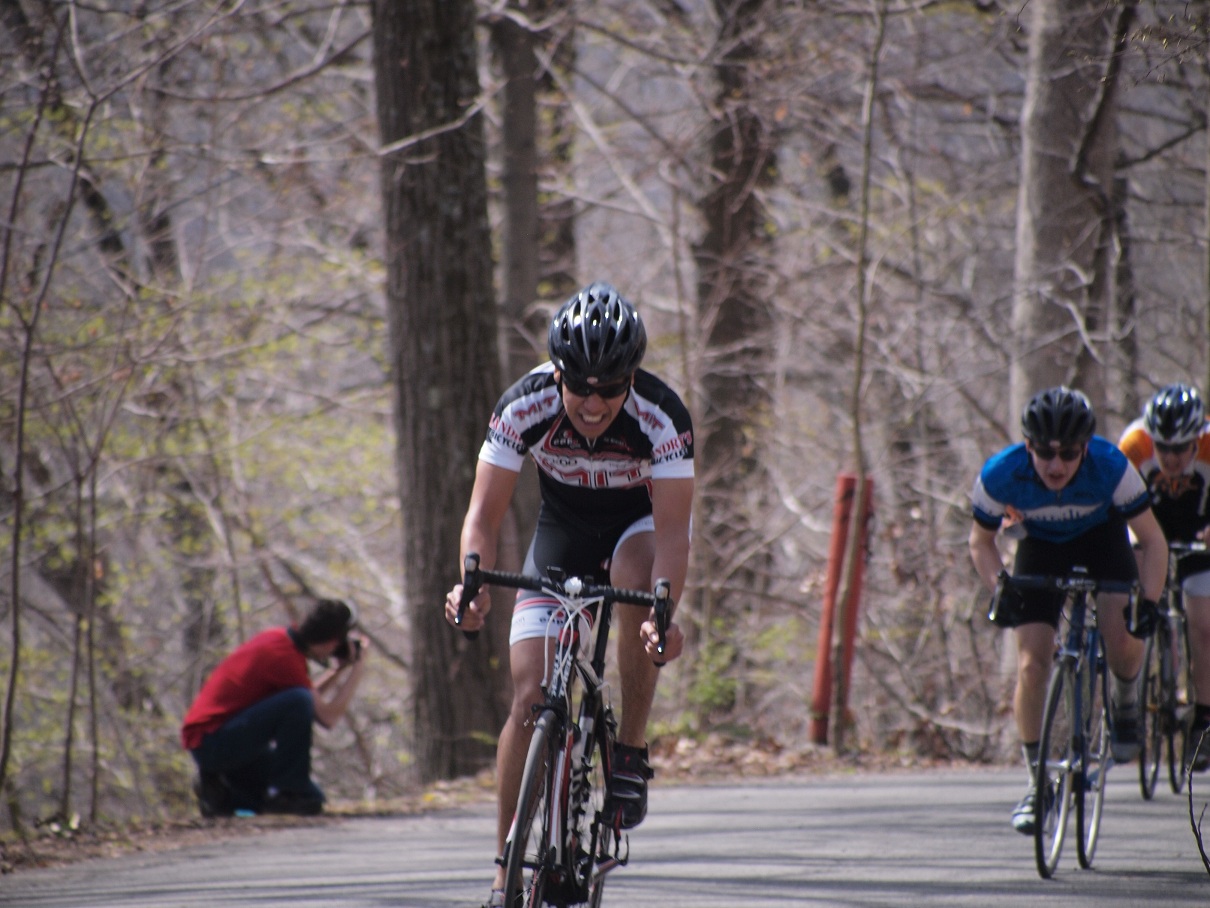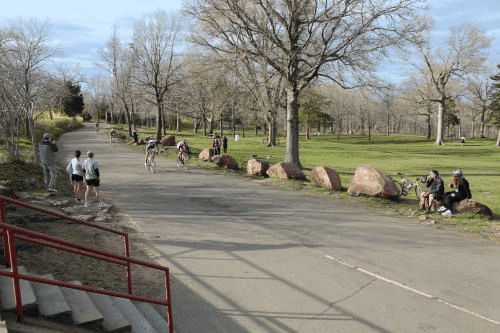Cross nats for me was more than just 45 minutes of mud. It was a year of waiting, of hard work & wavering confidence, …and immense support from friends and family. I rolled my ankle and snapped a ligament in half just two weeks before Nationals in 2012. I couldn’t walk, let alone race my bike. It was devastating, and “next time” was a whole year away. I trained and raced to keep busy, almost not caring about cross in the middle of road and track seasons (which in themselves were so fun and rewarding, how could I care about cross nats?) But when the week of nationals finally rolled around again, I don’t think my resting HR dropped below 100.
I’d done my homework: the training, all the races that were “just practice” for nationals, stalking my competitors’ performance on crossresults.com… And I was more nervous for the collegiate race than any race I’ve ever done. My competitors were all Cat 1s (I’m a “New England 2”) and lots of talent was predicted to finish in front of me. The course conditions were ugly: sloppy slippery mud with no grass or traction to be found. It was also just starting to fall below freezing, so the mud was coagulating, and quickly. Within a few pedal strokes, derailleurs, cassettes, and pedals/cleats were saturated with gunk and unusable. There was nothing for tires to hold on to. I ran 18 psi… effectively flat, bottoming out… to try to get any traction at all.
The whistle blew for the starting sprint (a sprint on 18psi soft casing tubulars is… sketchy) and we launched ourselves into the mud pit. Two women in front of me immediately exploded in the mud, lost all traction, and found themselves going perpendicular to the course (yet opposite to each other). I vaguely remember one girl in blue kit staying upright and passing me on my right. This would have been Erica Zaveta, who won the race. The D1 women were given >1 min head start, but we still caught them by the 3rd turn in the course. I pitted immediately, having raced less than half a lap, and took a fresh bike for the hill. In the traffic of the back end of the D1 field, I lost sight of Erica, had to run the hill, and occasionally put a foot down because of other riders. The gap to 1st was probably established on this lap, when traffic was highest, and it grew. She had a great day. I tried to focus on my immediate task: This line, pedal here, slip-and-slide here, tri-pod this corner on the descent, attack up the stairs, sprint on the pavement, passing riders where I could. I was surprised to find myself never having crashed.

Pitting was essential, both in the Collegiate race on Saturday and in the elite race on Sunday. I can’t emphasize enough how my good races both days were a DIRECT result of Andrew, Joe, and Zach’s help in the pit and along the course. The mud was SO bad, you HAD to pit every half lap for a new bike to be competitive. I’d come barreling into the pit with frozen hands and no coordination, clumsily pass off a dysfunctional bike, grab a new one, and in 7-8 minutes, I’d be back on the other side of the pit for the bike. In the meantime, the guys’ jobs were to pressure wash the bike and make sure it was rideable, AND get information to me that the bike was ready and I could come to the pit (there are penalties for just riding through the pit)… and they had to do this in under 8 minutes while competing with other riders’ pit crews.
The mud made the lap times LONG: 15 minutes or so. It also meant you had to fight for every foot of progress you made on course. And it meant that you needed a GOOD, attentive pit crew. I had all those things and I finished 2nd… passing every other D1 rider except Kaitlin Antonneau (a pro rider for Cannondale who was on the USA team for Worlds). I’m supremely happy with my performance, since the race was both a real test of fitness and of handling. Though I wish I could have brought home the stars and bars, it gives me something to fight for “next time”.
Sunday was the elite race, and after Saturday, I had absolutely ZERO leftover anxiety. I was starting waaaaay, way back, 6th row: the last UCI ranked rider, 41st, in a field of 80 or so. It was wonderful to see so many New England Cyclocrossers in the rows in front of me: women I’ve been racing all season and beating or losing to, but friendly faces nonetheless. The temp had warmed up to 10-15*F by now, but I had a secret weapon…. BATTERY HEATED GLOVES! They’re almost embarassingly cozy, and maybe the red LEDs say too loudly “I’m not really here to race.” I hoped I proved those thinkers wrong!
The sprint was chaos and I held back a bit to stay out of trouble, since the U23 field before us had had a big crash on ice in the starting chute. What was a mudbog just 24 hours before was now deep frozen ruts. Stubborn, insistent, immobile ruts. If you put your wheel(s) in one, your bike was goign to follow, no matter what speed you were carrying. There were two pseudo-good-lines in the course from races prior, about 6″ across, but during the first few minutes of racing, they were saturated with riders– and those riders weren’t staying on their alloted 6″ trail. People and bikes were everywhere. I rode light on the front wheel and powered at a near sprint in the middle of the lane, right over all the ruts people were avoiding, dodging left and right when crashes happened on the sides. This strategy seemed to work. The mud on the hillsides was frozen now too, so I could actually sprint up on the bike, not run. But again, lots of rider traffic. I’m a terrible descender, but today, I felt light, unworried, veteran after yesterday, so I went down the mediocre lines at high speed, passing rider upon rider. It was an AWESOME feeling. My legs felt great (or numb?) and I sprinted up the stairs (I had two Toastie-Toes in each shoe, AND duct tape over the vents) passing more people there. I attacked at all the right places, rode technical sections well enough most of the time. My second or third lap I endoed HARD in a rut (oof), bent my rear derailleur, twisted my saddle and my shifter out of line, and dislodged my rear brake’s saddle cable… Just before the descents. Initially I crashed a fair bit (that kind of crashing where your front wheel washes out and you sort of “run” over your bike and down the course without falling over but have to run back up to retrieve your bike…) but then discovered you don’t really need any brakes on the descent. Holding your breath helps some… I pitted again, THANKS SUPER AWESOME MIT SUPPORT CREW, got a fresh bike and continued on. When my pulleys froze and my chain skipped over ice in the casstte, I also pitted.
I crossed the line, feeling AWESOME. Regardless of the result, I knew I’d raced to the best of my technical ability, and I felt fresh compared to the day before. I did not expect to have finished… 20th! My lap times decreased continuously and my last lap was two minutes faster than my first. Maybe the best feeling of all, however, was passing Erica (the D2 champ from the day before) at the start of the last lap, and putting 30 seconds into her by the end. Ultimately, the elite race was THE FUNNEST CROSS RACE I HAVE EVER DONE. And that’s over ones I’ve won. Because it was technical, mental, physical, and required a team.
Things I learned from CX nats:
1. My MIT teammates enabled me to have great races. Without them, there would be no story to tell.
2. The support of our MIT team sponsors that enabled us to race at nationals are part of the reason I have two great new race memories!
3. Pitting is CRITICAL
4. A “New England 2” is really a 1 everywhere else.
5. The worse the conditions, the better I race!
(Do I need to emphasize my teammates again?)

